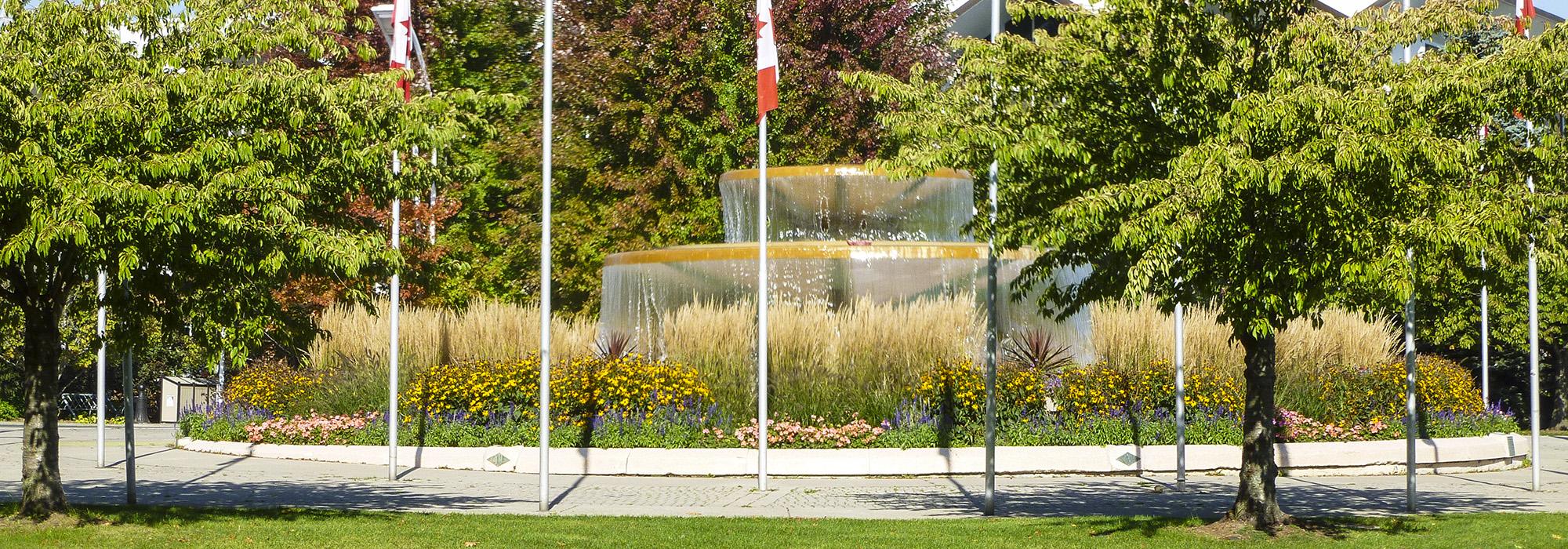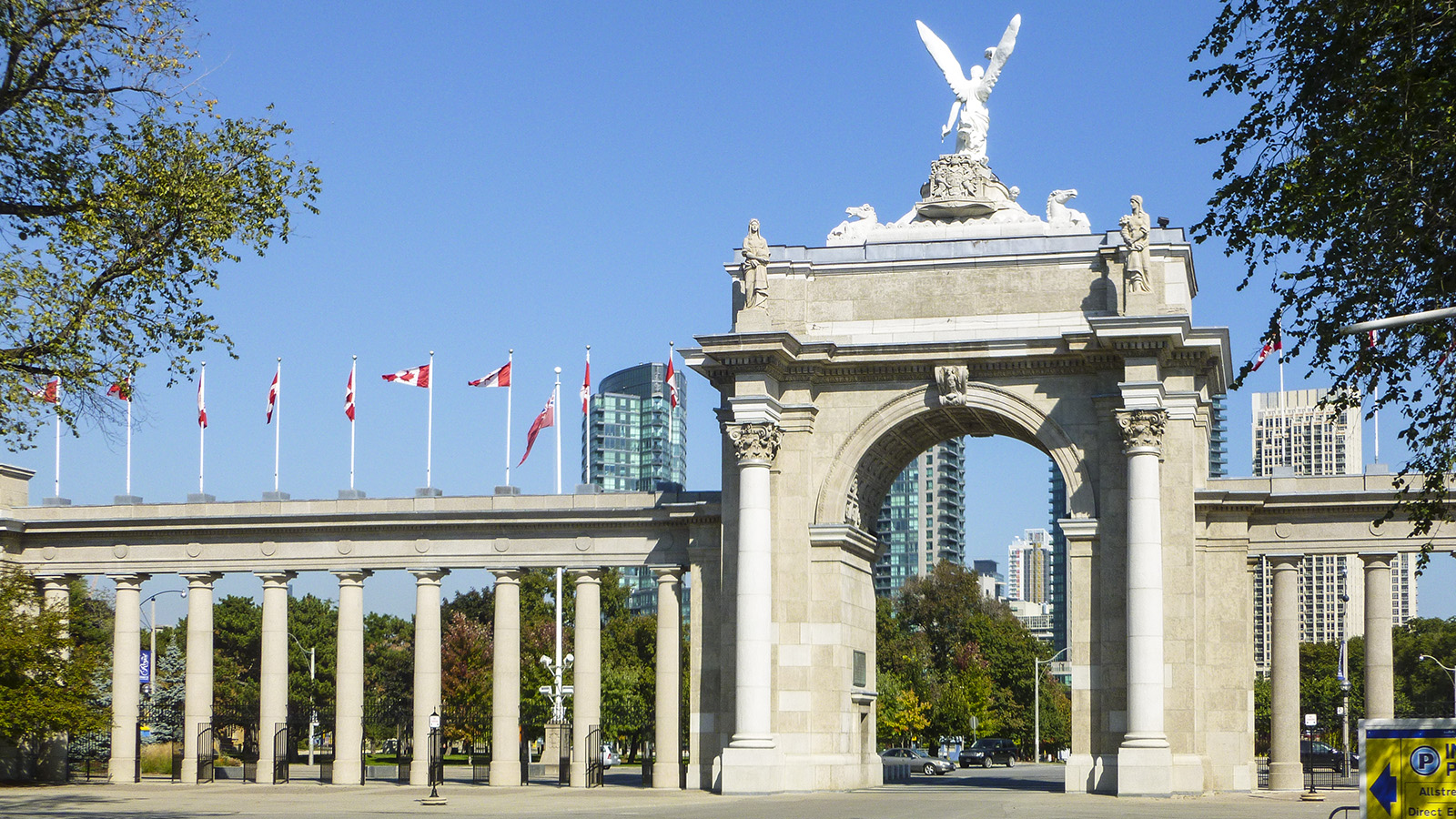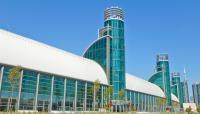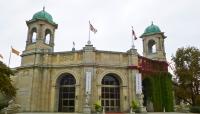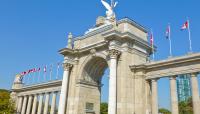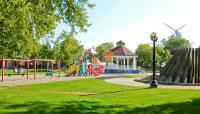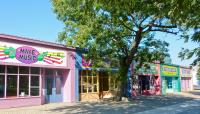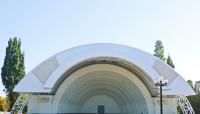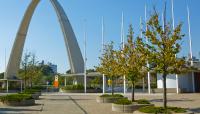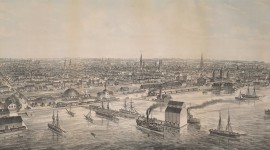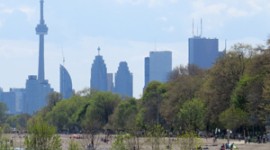Located along the shores of Lake Ontario, just west of downtown Toronto, this 78-hectare parcel between the Gardiner Expressway and Lake Shore Boulevard is a venue for conventions, trade shows, sporting events, and other gatherings. In 1879 the Toronto Industrial Exhibition (renamed the Canadian National Exhibition, in 1912) was founded on the site, whose first great hall, the Crystal Palace, burned in 1906. Toronto architect George Goiunlock redesigned the western portion of the grounds in the early twentieth century, constructing fifteen buildings, only five of which survive. Built between 1905 and 1912, they are significant examples of early exhibition halls, and show the influence of the World’s Columbian Exposition of 1893, in Chicago. In the mid-1920s, Alfred Chapman designed the expansion of the eastern grounds, opening the way for many subsequent buildings, from then to the present.
The Princes’ Gates (built in 1927 by Chapman) frame the entry to the eastern grounds, where asphalt surfaces predominate. The road moves west past the historic Officers’ Quarters of the Stanley Barracks (built in 1841), parking lots, and a soccer stadium, before reaching the western section, where most of the site’s twenty hectares of landscaped grounds are located, including Bandshell Park. South of the Bandshell is the Rose Garden, created in 1959 with nearly 3000 rose bushes. To its west, an obelisk marks the site of Fort Rouille, built by the French in 1750 but destroyed in 1759; and farther along is the Scadding Cabin—Toronto’s oldest existing home—built in 1794 and moved here from the east bank of the Don River, in 1879.



